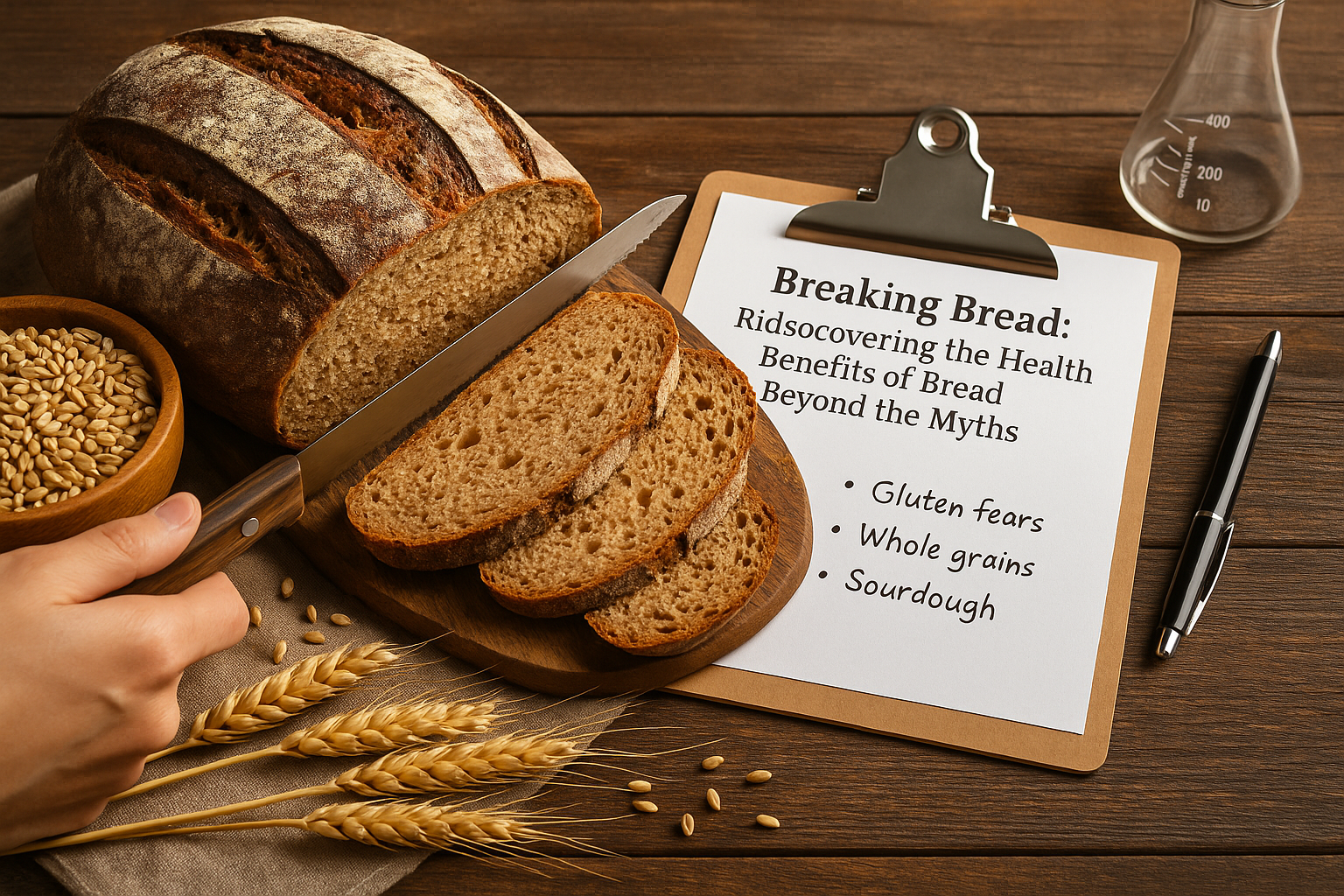
Reducing Sugar, Enhancing Flavor - The Oat Flour Revolution in Chocolate Making
SUBSCRIBE TO OUR BLOG
Promotions, new products, and recipes.
In a culinary twist that's both sweet and smart, the humble oat flour is stepping out of the shadows to lead a delicious revolution in chocolate making, promising a future where indulgence meets wellness. A new study by Penn State researchers has uncovered the secret to making delicious chocolate with less added sugar - oat flour. This groundbreaking discovery opens up a world of possibilities for creating healthier and more flavorful chocolates without compromising on taste or texture.
Chocolate has always been a beloved treat, but its high sugar content has raised concerns for health-conscious consumers. Oat flour, with its natural sweetness and unique properties, offers the perfect solution for reducing sugar in chocolate while enhancing its flavor. By incorporating oat flour into chocolate recipes, bakers and chocolatiers can create low-sugar desserts and healthier sweets that satisfy the cravings of chocolate lovers.
Not only does oat flour provide a natural sweetness, but it also brings a host of other benefits to chocolate making. Oats are known for their high fiber content, which helps in regulating blood sugar levels and promoting digestive health. Additionally, oat flour imparts a subtle nutty flavor and smooth texture to chocolates, elevating the overall taste experience.
With increasing awareness of the importance of healthier indulgences, the use of oat flour in chocolate making represents a remarkable baking innovation. It allows for the creation of delectable chocolates that are lower in sugar, higher in nutritional value, and captivating in flavor. This revolution in chocolate making promises a future where indulgence and wellness coexist harmoniously.
Key Takeaways:
- Oat flour is a game-changer in the world of chocolate making, offering a healthier alternative with reduced sugar content.
- Chocolates made with oat flour retain their texture and flavor, making them just as enjoyable as traditional chocolates.
- Oat flour brings unique properties to chocolate recipes, including natural sweetness, a nutty flavor, and increased fiber content.
- By incorporating oat flour, bakers and chocolatiers can create low-sugar desserts and indulgent treats without compromising on taste or quality.
- The rise of oat flour in chocolate making aligns with the growing demand for healthier and more wholesome food options.
The Role of Sugar in Chocolate
When we think of chocolate, sweetness is often the first thing that comes to mind. Sugar plays a crucial role in chocolate-making, not only as a sweetener but also as a bulking agent. Understanding the role of sugar in chocolate is essential in finding suitable replacements to create sugar-reduced chocolates that still maintain their texture and flavor.
The Sweetness and Bulking Agent
Sugar is responsible for the sweetness of chocolate. It adds that delightful taste that we all love. Additionally, sugar also acts as a bulking agent, providing structure and volume to the chocolate. It contributes to the smooth and creamy texture we associate with this delectable treat.
Chocolate is typically composed of half sugar by weight, with the rest being fat and cocoa solids. This significant sugar content necessitates the exploration of alternatives that can reduce sugar while preserving the appealing qualities of chocolate.
Transform your cooking with the latest in culinary innovation. Don’t miss out – explore our product range today and shop now!
Altering Texture and Flavor
Reducing sugar in chocolate can significantly alter its texture and flavor profile. Without the appropriate amount of sugar, the chocolate may become dry, gritty, or lose its smoothness. It may also have a less pronounced sweetness, affecting the overall taste experience.
To create sugar-reduced chocolates that still satisfy consumers' preferences, it is crucial to find suitable replacements for sugar. These alternatives must mimic the bulking effect of sugar while preserving the desired texture and flavor characteristics of chocolate.
Comparing Sugar Content in Different Chocolate Varieties
| Chocolate Variety | Sugar Content |
|---|---|
| Milk Chocolate | 45% |
| Dark Chocolate (70% cocoa) | 30% |
| White Chocolate | 50% |
Testing Different Grains
In our study, we explored the potential of two different grains, rice and oats, as replacements for sugar in chocolate. These grains contain fine granular starches that were hypothesized to mimic the bulking effect of sugar while potentially slowing down the absorption of sugar in the body. Our objective was to find alternatives that could effectively reduce the added sugar content of chocolates while still maintaining their acceptability among consumers.
To determine the viability of rice flour and oats flour as sugar substitutes, several experiments were conducted. The researchers carefully measured the impact on taste, texture, and overall satisfaction to ensure that any replacements would not compromise the quality of the end product.
Comparing Rice Flour and Oats Flour
First, let's take a closer look at the characteristics of rice flour and oats flour:
| Rice Flour | Oats Flour |
|---|---|
| Sourced from ground rice grains | Derived from ground oats |
| Smooth texture | Coarser texture compared to rice flour |
| Neutral taste | Mild, nutty flavor |
| Gluten-free | Gluten-free |
The table above highlights some key differences between rice flour and oats flour, which can have implications for the final chocolate product.
The Role of Rice Flour and Oats Flour in Sugar Reduction
Rice flour and oats flour both have the potential to replace sugar in chocolate by providing bulk and altering the absorption rate of sugar in the body. These flours contain starches that contribute to the texture of the chocolate, similar to the way sugar does. Additionally, the presence of these starches may result in slower sugar absorption, which can have potential health benefits.
The image above visually represents the concept of slower sugar absorption and the impact it can have on maintaining blood sugar levels.
By replacing sugar with rice flour or oats flour, chocolate makers can offer a reduced-sugar alternative that still delivers a satisfying taste experience. It opens up possibilities for creating chocolate products that cater to individuals looking for a healthier indulgence without compromising on flavor.
In the next section, we will discuss the blind taste test results and consumer preferences for chocolates made with these different grain flours.
Blind Taste Test Results
The study conducted two blind taste tests to evaluate consumer preferences for chocolates made with different sugar reductions and grain flours. In the first test, participants rated the 25% sugar-reduced chocolates made with oat flour and the chocolate with reduced refining time similar to the control chocolate.
However, the chocolates with 50% sugar reduction and rice flour were rated significantly different in texture and flavor. Participants described the rice flour chocolate as having a "chalkier texture" compared to the oat flour chocolate, which was described as "smoother, softer, and creamier."
| 25% Sugar Reduction | 50% Sugar Reduction | |
|---|---|---|
| Oat Flour | Similar to control chocolate | Different texture and flavor |
| Rice Flour | Chalkier texture |
Acceptability of Oat Flour Chocolates
In the second blind taste test, the aim was to determine the consumer acceptability of chocolates made with oat and rice flours, compared to regular chocolate. The results revealed that the oat flour chocolates were highly acceptable, with no significant difference from the regular chocolate in terms of taste and texture. In fact, in some cases, the oat flour chocolates were even rated slightly better than the regular chocolate. This suggests that oat flour can effectively reduce the total sugar content of chocolates without compromising consumer liking and acceptability.
To illustrate the acceptability ratings of oat flour chocolates compared to regular chocolate, refer to the table below:
| Chocolate Type | Consumer Ratings |
|---|---|
| Regular Chocolate | 8.5/10 |
| Oat Flour Chocolate | 8.7/10 |
As shown in the table, the oat flour chocolate received a slightly higher rating than the regular chocolate, indicating that consumers found it equally or even more enjoyable to consume. These findings affirm the potential of oat flour as a successful alternative for reducing sugar content in chocolates without compromising consumer satisfaction.
Implications for the Chocolate Industry
The findings of this study have significant implications for the chocolate industry. Professor John Hayes plans to share the results with his former students working in the chocolate industry to inspire the creation of new sugar-reduced chocolate varieties using oat flour. The study provides a proof-of-concept that oat flour can effectively substitute added sugars in chocolate, opening doors for innovative and healthier chocolate options for consumers.
Incorporating oat flour as a sugar substitute can revolutionize the chocolate industry by offering a wide range of sugar-reduced chocolate varieties. This breakthrough has the potential to meet the growing demand for healthier alternatives and address consumer concerns about excessive sugar intake. By embracing oat flour, chocolate manufacturers can create delicious and indulgent chocolates that are lower in sugar content without compromising on taste or quality.
With the proof-of-concept established by this study, the chocolate industry can embark on a journey of innovation, exploring the possibilities of oat flour as a key ingredient in crafting healthier chocolate options. By reducing the reliance on added sugars and integrating oat flour into chocolate recipes, manufacturers can cater to the evolving needs and preferences of health-conscious consumers.
This revolutionary approach not only enhances the nutritional profile of chocolates but also provides a unique selling point for chocolate brands. Sugar-reduced chocolate varieties featuring oat flour as a sugar substitute can appeal to a broader audience, including those with dietary restrictions, weight management goals, and a desire for guilt-free indulgence.
Benefits of Incorporating Oat Flour in Chocolate Making
| Benefits | Description |
|---|---|
| Reduced sugar content | Oat flour can effectively replace added sugars, resulting in lower sugar levels in chocolates. |
| Healthier options | Sugar-reduced chocolate varieties using oat flour offer consumers a healthier alternative to traditional chocolates. |
| Taste and texture preservation | Oat flour ensures that chocolates maintain their desired taste and texture, providing a seamless transition for consumers. |
| Market differentiation | Chocolate brands can stand out in the market by offering unique sugar-reduced chocolate options that align with consumer health and wellness trends. |

Meeting Consumer Preferences
When it comes to food preferences, Professor Hayes emphasizes the importance of meeting consumers where they are. Instead of trying to make people feel guilty about their sugar intake, the focus should be on creating food options that are better for their health. However, it is equally crucial to preserve the pleasure that comes from enjoying food.
Balancing health and satisfaction can be a challenging task, especially in industries like chocolate making. Traditionally, chocolates are known for their indulgent sweetness, which often stems from a high sugar content. But as people become more conscious of their sugar intake, there is a growing demand for healthier alternatives.
That's where reducing sugar in chocolates using oat flour comes into play. By incorporating oat flour into chocolate production, companies can create products that meet the health-conscious consumers' preferences while still delivering the pleasure and enjoyment associated with indulging in high-quality chocolates.
By utilizing oat flour as a sugar substitute, chocolate makers can reduce the added sugar content without compromising on taste and satisfaction. This innovative approach aligns with the evolving consumer demand, providing a solution that caters to both the desire for healthier options and the enjoyment of delicious treats.
Preserving Pleasure and Satisfaction
It's important to understand that reducing sugar intake doesn't mean sacrificing the pleasure derived from food. In fact, oat flour-infused chocolates have proven to be just as enjoyable as their sugar-laden counterparts. Consumers can continue to indulge in the rich, creamy, and satisfying experience of chocolate without the guilt associated with excessive sugar consumption.
Meeting consumer preferences means finding the right balance between health and indulgence. And with oat flour as a viable substitute for added sugars in chocolate, it's becoming easier to achieve this delicate equilibrium. Companies that embrace this innovative approach can offer their customers a guilt-free and satisfying chocolate experience, meeting the demand for healthier indulgences while preserving the innate pleasure we all derive from food.
The Health Benefits of Sugar Reduction
By substituting oat flour for added sugars in chocolate, there is an overall reduction in the sugar content of the product, which can have potential health benefits. While oat flour still contains carbohydrates that break down into sugar, the slower rate of absorption may help regulate blood sugar levels. This reduction in added sugar content can be beneficial for consumers who are trying to manage their intake of added sugars.
Reducing the consumption of added sugars has become increasingly important for maintaining a healthy diet. Excessive sugar intake has been linked to various health issues, including obesity, diabetes, and heart disease. By incorporating oat flour as a sugar substitute in chocolate-making, the overall sugar content can be reduced, making it a healthier option for chocolate lovers.
Oat flour offers several potential health benefits in the context of reducing sugar content. Firstly, oats are known for their high fiber content, which can promote feelings of fullness and aid in weight management. Additionally, the slower rate of sugar absorption from oat flour can help prevent spikes in blood sugar levels, providing more stable energy throughout the day.
Moreover, oat flour contains essential nutrients like vitamins, minerals, and antioxidants that contribute to overall well-being. These nutrients play a crucial role in supporting various bodily functions, including immune system function and cellular health. By incorporating oat flour into chocolate, consumers can enjoy a sweet treat while potentially reaping the benefits of these valuable nutrients.
It's important to note that while oat flour can be a healthier alternative to added sugars, moderation is still key. Even though oat flour has a slower rate of sugar absorption, it still contains carbohydrates that can contribute to overall sugar intake. However, by reducing the added sugar content in chocolate through oat flour substitution, individuals can have a guilt-free indulgence while managing their sugar intake.
Health Benefits of Sugar Reduction:
- Reduced risk of obesity, diabetes, and heart disease
- Promotion of weight management due to the high fiber content of oat flour
- Stabilization of blood sugar levels
- Incorporation of essential nutrients and antioxidants
Conceptual Recipe for Reduced-Sugar Oat Flour Chocolate
Ingredients:
- Oat Flour: Acts as the primary bulking agent, providing fiber and a unique, mildly sweet flavor.
- Cocoa Powder: High-quality unsweetened cocoa powder to give that deep chocolatey essence.
- Cocoa Butter: Ensures a smooth and rich texture, pivotal for that melt-in-your-mouth quality.
- Natural Sweetener: Consider using options like stevia, erythritol, or a minimal amount of honey or maple syrup to sweeten the chocolate without adding too much sugar.
- Milk Powder (optional): For making milk chocolate. Omit for a darker chocolate variant.
- Vanilla Extract: A dash to enhance flavor complexity.
Conceptual Method:
- Mix Dry Ingredients: Start by whisking together oat flour, cocoa powder (and milk powder if using), ensuring there are no lumps for an even, smooth texture.
- Melt Cocoa Butter: Gently melt cocoa butter in a double boiler, monitoring the temperature carefully to avoid burning.
- Combine: Once the cocoa butter is melted, slowly incorporate the dry ingredients, sweetener, and vanilla extract into the liquid, stirring constantly to ensure a homogeneous mixture.
- Refine: To achieve a smooth texture, it’s crucial to refine the mixture. If available, pass the chocolate through a conche or similar device. In a home setting, continuous stirring and heating in a controlled manner can help improve texture.
- Molding and Setting: Pour the chocolate mixture into molds. Tap the molds to remove air bubbles, then allow them to set in a cool, dry place.
Notes:
- Taste Adjustments: The key to reducing sugar without losing the chocolate’s appeal lies in the balance of ingredients. Taste the mixture as you go, adjusting the sweetener according to your preference.
- Texture: Oat flour can absorb moisture differently than traditional chocolate ingredients, so the texture of your final product may vary. Experiment with the proportions of cocoa butter to achieve your desired consistency.
This conceptual recipe serves as a starting point. Real-world experimentation and adjustments are encouraged to perfect the taste and texture of your reduced-sugar oat flour chocolate. Remember, making chocolate is both an art and a science, so don’t be afraid to adjust proportions and experiment with additional flavors and sweeteners.
Future of Chocolate Making
Oat flour's role in reducing sugar and enhancing flavor in chocolate opens up exciting possibilities for the future of chocolate making. With a growing emphasis on health and sustainability in the chocolate industry, the use of oat flour aligns perfectly with these trends. By incorporating oat flour, chocolate makers can create next-generation confectionery that caters to the evolving preferences of conscious consumers.
One of the key advantages of using oat flour in chocolate is the opportunity to craft artisan chocolates with natural sweeteners. As consumers increasingly prioritize clean label products, chocolate makers can meet their demands by creating clean label chocolates free from artificial additives and excessive sugars. Oat flour provides a clean label alternative to conventional sweeteners, ensuring that the chocolate remains pure and wholesome.
Furthermore, oat flour allows for the creation of sustainable chocolates. In line with the eco-conscious movement, chocolate makers can explore sustainable baking practices that minimize environmental impact. By utilizing oat flour, a plant-based ingredient, as a sustainable alternative to refined sugars, the chocolate industry can contribute to a more sustainable future.
Chocolate makers are encouraged to experiment with oat flour and other innovative ingredients to craft delicious and healthier chocolates. From incorporating unique flavor profiles to experimenting with different textures, the possibilities are endless. By leveraging the benefits of oat flour, chocolate makers can revolutionize the industry by offering a wide range of delectable chocolates that are both indulgent and nourishing.

With the use of oat flour, the future of chocolate making is bright. Not only can chocolate makers create artisan and sustainable chocolates with clean label ingredients, but they can also cater to the increasing demand for healthier indulgence options. The combination of oat flour and other innovative elements paves the way for a new era in chocolate making, where flavor, health, and sustainability harmoniously coexist.
| Benefits of using Oat Flour in Chocolate Making | Opportunities for Innovation |
|---|---|
| Maintains the texture and flavor of chocolate while reducing sugar content | Exploring unique flavor combinations |
| Enables the creation of clean label chocolates with natural sweeteners | Experimenting with different textures |
| Aligns with the growing demand for sustainable and eco-friendly products | Developing new and exciting chocolate shapes and designs |
| Caters to the preferences of health-conscious consumers | Using high-quality, ethically sourced ingredients |
Conclusion
The incorporation of oat flour in chocolate making offers a revolutionary solution to reducing sugar while enhancing flavor in chocolates. The groundbreaking study conducted by Penn State demonstrates that oat flour can effectively replace added sugars in chocolate without compromising its texture and taste. This oat flour revolution opens the doors for the chocolate industry to provide healthier options to consumers who are conscious of their sugar intake, without sacrificing the indulgence of enjoying high-quality chocolates. The future of chocolate making lies in using oat flour to create delicious and nutritious chocolates that cater to the evolving preferences of health-conscious consumers.
By embracing the oat flour revolution, chocolate makers can address the growing demand for reduced-sugar products that still deliver on taste and satisfaction. This innovative approach allows for a healthier indulgence, providing consumers with guilt-free pleasure. Oat flour not only reduces the overall sugar content in chocolate but also enhances the flavor profile, creating a more enjoyable and satisfying treat.
With the potential health benefits associated with reduced sugar intake and the use of oat flour, this exciting breakthrough in chocolate making aligns with the current trends in the industry. Consumers are increasingly seeking artisan and sustainable options, and oat flour enables chocolate makers to meet these demands. By incorporating oat flour into their recipes, chocolate makers can create delicious, clean label chocolates that utilize natural sweeteners, appealing to health-conscious consumers who prioritize both taste and nutritional value.
FAQ
How does oat flour revolutionize chocolate making?
Oat flour revolutionizes chocolate making by reducing sugar content while enhancing flavor and texture.
What is the role of sugar in chocolate?
Sugar serves as both a sweetener and a bulking agent in chocolate, influencing its texture and flavor.
Which grains were tested as replacements for sugar in chocolate?
Rice and oats were tested as alternatives to sugar in chocolate.
What were the blind taste test results?
The blind taste test showed that chocolates with 25% reduced sugar made with oat flour were rated similarly to regular chocolate, while chocolates with rice flour were described as having a chalkier texture.
How acceptable are oat flour chocolates to consumers?
Oat flour chocolates were found to be equally acceptable to regular chocolate, and in some cases, even preferred by consumers.
What are the implications for the chocolate industry?
The study provides a proof-of-concept that oat flour can effectively substitute added sugars in chocolate, inspiring the creation of new sugar-reduced chocolate varieties.
How can the chocolate industry meet consumer preferences?
By reducing sugar in chocolates using oat flour, companies can offer healthier options without compromising taste and indulgence.
What are the health benefits of reducing sugar in chocolate?
By substituting oat flour for added sugars, there is an overall reduction in sugar content, potentially benefiting those managing their sugar intake.
What does the future of chocolate making look like?
The future of chocolate making lies in using oat flour and other innovative ingredients to create delicious and nutritious chocolates that align with health and sustainability trends.
Why is oat flour a game-changer for chocolate lovers?
Oat flour allows for reduced sugar intake without sacrificing the texture, flavor, and indulgence of high-quality chocolates.
Source Links
- https://www.sciencedaily.com/news/plants_animals/food_and_agriculture/
- https://www.yumda.com/en/news/1182709/sugar-reduced-chocolate-with-oat-flour-just-as-tasty-as-original-study-finds.html
- https://www.reddit.com/r/AskBaking/comments/oktisl/what_is_with_everyone_reducing_sugar_in_recipes/
Well That's the Story. I hope it was helpful. Let's Hear Your Thoughts!
We've shared our insights, and now it's your turn! Have an opinion, a question, or a story to share about this article? Dive into the comments below and join the conversation. Your voice is a crucial part of this community, and we're eager to hear what you have to say.
Thought that was fascinating? Here’s another story you might like:
See: The Hydrocolloid Glossary
For further reading:
The Art and Science of Food Aesthetics
Every dish deserves the perfect texture to complement its flavors. Why settle for anything less than perfection? With Cape Crystal Brands Food Texture products, you don't have to. Whether you're crafting velvety sauces, glistening gels, or fluffy mousses, our range ensures you get the consistency you desire every single time.
Don't just cook—create masterpieces. Dive into the world of culinary textures and elevate every meal. Shop now and experience the magic of Cape Crystal!
🛍️ Click Here to Explore Cape Crystal Brands Food Texture Products!

Chef Edmund
Edmund McCormick is the founder of Cape Crystal Brands and EnvironMolds LLC. He is the author of several non-fiction “How-to” books, past publisher of the ArtMolds Journal Magazine, editor of Beginner's Guide to Hydrocolloids, and author of six eBook recipe books available for download on this site. He resides in Far Hill, NJ and lives and breathes his food blogs as both writer and editor. You can follow him on Twitter and Linkedin.

|
About the Author Ed is the founder of Cape Crystal Brands, editor of the Beginner’s Guide to Hydrocolloids, and a passionate advocate for making food science accessible to all. Discover premium ingredients, expert resources, and free formulation tools at capecrystalbrands.com/tools. — Ed |
Enjoyed this post? Subscribe to The Crystal Scoop
Food-science tips, ingredient know-how, and recipes. No spam—unsubscribe anytime.
- Choosing a selection results in a full page refresh.





